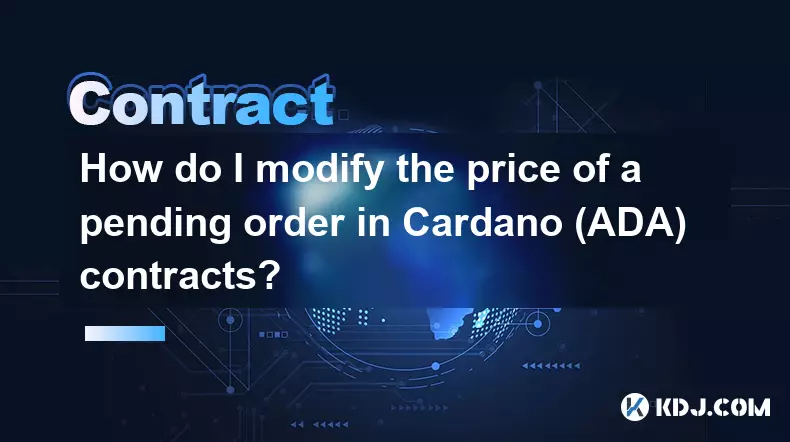-
 bitcoin
bitcoin $109523.663807 USD
-0.13% -
 ethereum
ethereum $4019.526508 USD
2.06% -
 tether
tether $1.000482 USD
0.00% -
 xrp
xrp $2.776815 USD
0.18% -
 bnb
bnb $958.942396 USD
0.12% -
 solana
solana $204.294698 USD
3.84% -
 usd-coin
usd-coin $0.999693 USD
0.00% -
 dogecoin
dogecoin $0.232115 USD
2.09% -
 tron
tron $0.338028 USD
0.84% -
 cardano
cardano $0.790920 USD
1.50% -
 hyperliquid
hyperliquid $44.871443 USD
5.60% -
 ethena-usde
ethena-usde $1.000322 USD
0.04% -
 chainlink
chainlink $21.034165 USD
2.60% -
 avalanche
avalanche $28.794831 USD
-0.54% -
 stellar
stellar $0.360466 USD
1.24%
How can I view historical settlement records for Bitcoin contracts?
Historical Bitcoin contract settlement data is accessible via exchange APIs, on-chain analytics, and third-party platforms for in-depth derivatives analysis.
Sep 26, 2025 at 04:01 am

Accessing Historical Bitcoin Contract Settlement Data
1. Many cryptocurrency exchanges provide detailed records of historical settlements for Bitcoin futures and perpetual contracts. Platforms like BitMEX, Binance Futures, and Bybit maintain comprehensive archives accessible through their user dashboards. Traders can navigate to the 'Wallet' or 'Transaction History' section to locate settlement logs, which typically include timestamps, contract types, settlement prices, and funding rates.
2. Public APIs offered by major exchanges allow programmatic access to settlement history. For instance, the Binance API endpoint /fapi/v1/income returns income records including funding payments and settlement events. Developers can filter results using parameters such as asset type, start date, and transaction type to extract Bitcoin-specific data over desired timeframes.
3. Third-party analytics platforms like Glassnode, CryptoQuant, and Coinglass aggregate settlement and funding rate data across multiple exchanges. These services compile raw exchange data into visual dashboards showing historical trends in settlement frequency and magnitude. Subscriptions may be required for granular or long-term datasets.
4. Some decentralized derivatives protocols such as dYdX or Synthetix record settlement events directly on-chain. Since these platforms operate on Ethereum or other blockchains, users can query smart contract logs via tools like Etherscan or Dune Analytics. SQL-like queries on Dune can reconstruct full settlement timelines for Bitcoin-based synthetic positions.
5. Institutional-grade data providers including Kaiko and Messari offer structured datasets covering historical contract settlements. These are often used by hedge funds and researchers who require verified, cleaned data for backtesting strategies or risk modeling. Access usually involves licensing fees and strict usage agreements.
Understanding Settlement Mechanics in Bitcoin Derivatives
1. In futures contracts, settlement occurs when a position reaches its expiration date. The final price is determined by a predefined index, often an average of spot prices from multiple exchanges. This prevents manipulation and ensures fairness in the settlement process.
2. Perpetual contracts do not expire but undergo periodic funding settlements. Every 8 hours on most platforms, longs and shorts exchange funding payments based on the premium between the mark price and the underlying Bitcoin spot value. These transfers are recorded as settlement events.
3. When liquidations occur, forced unwinding of positions triggers automatic settlement at prevailing market rates. Exchanges document each event with details about the leverage used, entry price, and realized loss, making it possible to analyze historical liquidation waves.
4. Settlement prices are typically derived from a basket of spot exchanges weighted by volume. For example, the BTCUSD index might pull data from Coinbase, Kraken, and Bitstamp. Transparency in index methodology is critical for traders assessing past settlement accuracy.
5. Hard forks or network upgrades rarely impact settlement records, as derivative contracts are priced in fiat or stablecoins rather than native chain units. However, exchange announcements during volatile events may alter settlement procedures temporarily.
Tools for Analyzing Bitcoin Contract Settlement Trends
1. TradingView supports custom scripts that can overlay historical funding rates and settlement times on price charts. Users can create alerts for high-frequency settlement periods, which often coincide with market volatility spikes.
2. Python libraries such as CCXT enable developers to pull settlement data directly from exchange APIs and store it in local databases. With pandas and matplotlib, this data can be transformed into time-series graphs highlighting seasonal patterns in settlement volumes.
3. On-chain analysis tools like Whale Alert sometimes report large settlements if they involve significant BTC movements between exchange wallets. While not focused on derivatives, these alerts can indicate major position closures following settlement cycles.
4. Excel or Google Sheets integration via API connectors allows non-programmers to import settlement records. Formulas can then calculate rolling averages of funding rates or flag dates with abnormal settlement activity.
5. Visualization platforms such as Tableau can connect to exported settlement CSV files. Interactive dashboards help identify correlations between settlement timing and macroeconomic events or news cycles.
Frequently Asked Questions
What is the difference between realized settlement and estimated funding rate?Realized settlement refers to actual payments transferred between counterparties during funding intervals or contract expiry. Estimated funding rate is a predictive metric displayed before settlement occurs, calculated based on current price divergence.
Can I retrieve settlement records before 2018?Limited data exists prior to 2018 due to lower exchange transparency and fewer active derivatives markets. However, BitMEX has published partial historical datasets going back to 2016, accessible through academic partnerships.
Are settlement records subject to retroactive adjustments?In rare cases, exchanges may revise settlement prices due to technical errors or extreme market conditions. Announcements are made public, and affected users receive corrected statements reflecting updated values.
Do all Bitcoin contracts settle in USDT or USD?Most centralized exchanges use USDⓈ-margined contracts settled in USDT or BUSD. However, some platforms like BitMEX offer inverse futures settled directly in BTC, where profits and losses are denominated in Bitcoin.
Disclaimer:info@kdj.com
The information provided is not trading advice. kdj.com does not assume any responsibility for any investments made based on the information provided in this article. Cryptocurrencies are highly volatile and it is highly recommended that you invest with caution after thorough research!
If you believe that the content used on this website infringes your copyright, please contact us immediately (info@kdj.com) and we will delete it promptly.
- Coin War, Durian Auction, Night Tour: A Wild Ride Through Crypto, Cuisine, and Korean TV
- 2025-09-27 08:45:14
- Cyber Hornet, ETFs, and Crypto: A New York Minute on Hybrid Investments
- 2025-09-27 08:25:12
- Bitcoin's Future Value: Prediction, Trends, and Insights
- 2025-09-27 08:45:14
- MoonBull: The Meme Market's 100x Crypto Contender?
- 2025-09-27 08:25:12
- Eric Trump, Crypto Market, and the Unbelievable Q4: A New York Take
- 2025-09-27 08:30:01
- Linea Crypto & SWIFT: What's the Price Prediction?
- 2025-09-27 08:50:01
Related knowledge

How do I enable the "scalping-only" mode for Cardano (ADA) contracts?
Sep 24,2025 at 03:19am
Understanding Scalping Strategies in Crypto Derivatives1. Scalping in cryptocurrency trading refers to executing multiple short-term trades within min...

What is the maximum position limit for Cardano (ADA) contracts?
Sep 23,2025 at 11:00pm
Understanding ADA Futures and Derivatives Market Structure1. Cardano (ADA) futures contracts are offered by several major cryptocurrency derivatives e...

What is the maker fee for Cardano (ADA) contracts?
Sep 26,2025 at 09:01am
Understanding Maker Fees in Cardano (ADA) Contracts1. The concept of maker fees applies broadly across decentralized exchanges and smart contract plat...

How can I view open interest in Cardano (ADA) contracts?
Sep 24,2025 at 07:36am
Understanding Open Interest in Cardano Derivatives1. Open interest refers to the total number of outstanding derivative contracts, such as futures or ...

How do I modify the price of a pending order in Cardano (ADA) contracts?
Sep 27,2025 at 01:00am
Understanding Pending Orders in Cardano Smart Contracts1. Cardano operates on a proof-of-stake blockchain that supports smart contracts through its Pl...

What is the function of the insurance fund in Cardano (ADA) contracts?
Sep 24,2025 at 02:18am
Understanding the Role of Insurance Funds in Cardano Smart Contracts1. The insurance fund within Cardano's ecosystem is not a native feature directly ...

How do I enable the "scalping-only" mode for Cardano (ADA) contracts?
Sep 24,2025 at 03:19am
Understanding Scalping Strategies in Crypto Derivatives1. Scalping in cryptocurrency trading refers to executing multiple short-term trades within min...

What is the maximum position limit for Cardano (ADA) contracts?
Sep 23,2025 at 11:00pm
Understanding ADA Futures and Derivatives Market Structure1. Cardano (ADA) futures contracts are offered by several major cryptocurrency derivatives e...

What is the maker fee for Cardano (ADA) contracts?
Sep 26,2025 at 09:01am
Understanding Maker Fees in Cardano (ADA) Contracts1. The concept of maker fees applies broadly across decentralized exchanges and smart contract plat...

How can I view open interest in Cardano (ADA) contracts?
Sep 24,2025 at 07:36am
Understanding Open Interest in Cardano Derivatives1. Open interest refers to the total number of outstanding derivative contracts, such as futures or ...

How do I modify the price of a pending order in Cardano (ADA) contracts?
Sep 27,2025 at 01:00am
Understanding Pending Orders in Cardano Smart Contracts1. Cardano operates on a proof-of-stake blockchain that supports smart contracts through its Pl...

What is the function of the insurance fund in Cardano (ADA) contracts?
Sep 24,2025 at 02:18am
Understanding the Role of Insurance Funds in Cardano Smart Contracts1. The insurance fund within Cardano's ecosystem is not a native feature directly ...
See all articles










































































